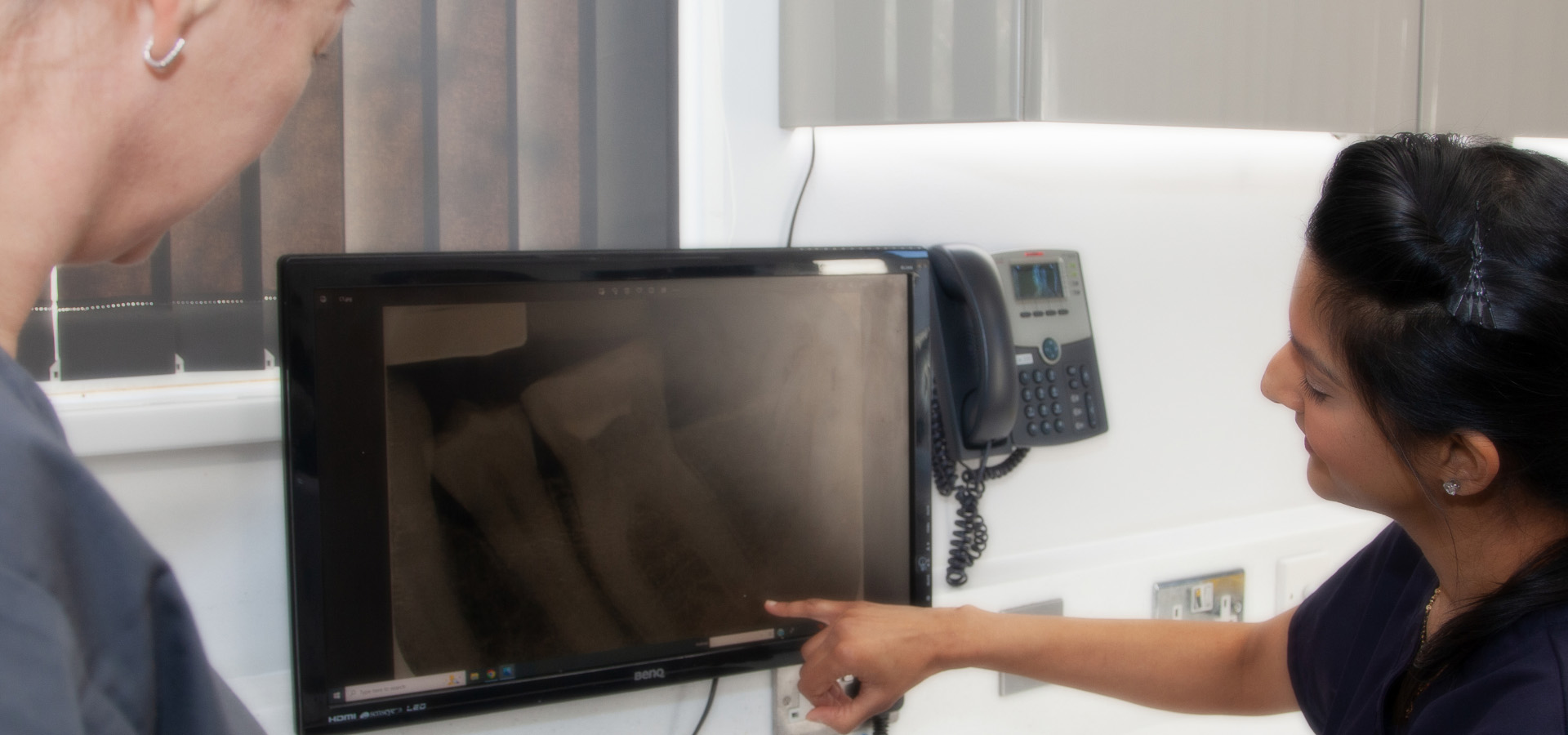
Conventional root canal treatment
We are a leading Endodontic Referral Practice providing pain free advanced Root Canal Treatment to patients referred to us by their dentists. Please consult your dentist if you think that you require Root Canal Treatment.
What is root canal treatment?
A root canal is a treatment used to repair and save a tooth that is badly decayed or becomes infected. During a root canal procedure, the nerve and pulp are removed and the inside of the tooth is cleaned and sealed. Without treatment, the tissue surrounding the tooth will become inflamed and an abscess can form.
“Root canal” is the term used to describe the natural space within the centre of the tooth. The pulp (tooth nerve) is the soft tissue within the root canal space. Endodontics is a specialty of Dentistry that deals with diseases of the dental pulp and its supporting structures. Our dentists have special post-graduate training in this field and are experienced at finding the cause of oral and facial pain that has been difficult to diagnose.
Although General Dentists can perform treatment patients are often referred to us when the case is complicated or more difficult than usual. We at Kentendo are experts in root canal treatment with state of the art facilities.
All the facilities required for such cases, including the operating microscope, ultrasonics and an electronic apex locator are routinely used at Kentendo.
In order to understand Endodontic treatment, it helps to know something about the anatomy of a tooth and the process involved in the treatment. This section is aimed at giving some basic information about the Anatomy of a tooth and basics of root canal treatment.
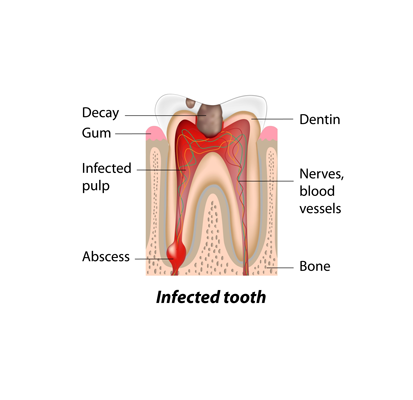
Teeth have several layers. The outside layer of the tooth is composed of a hard layer called Enamel. Enamel is supported by an inner layer called Dentin, which has at its centre a soft tissue known as the Pulp.
The pulp contains blood vessels, nerves, and connective tissue that are responsible for forming the surrounding Dentin and Enamel during tooth development. The pulp receives its nourishment supply from vessels which enter the end of the root. Although the pulp is important during development of the tooth, it is not necessary for function of the tooth. The tooth continues to be nourished by the tissues surrounding it even after the pulp is removed.
A root canal treatment typically requires one or more appointment visits.
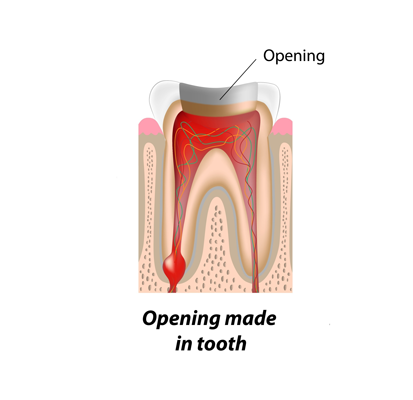
Prior to root canal treatment a radiograph is taken to see the shape of the roots and to determine if there are any signs of inflammation in the surrounding bone. Local anaesthesia is used to numb the area.
Next, a dental dam is placed around the tooth to keep the area dry and free of saliva during treatment. An access hole is drilled into the tooth, this is typically done with the use of a dental operating microscope, to help locate all the root canals whilst keeping tooth removal to an absolute minimum.
This is followed by the removal of infected nerve tissue and related debris from inside the root canals.
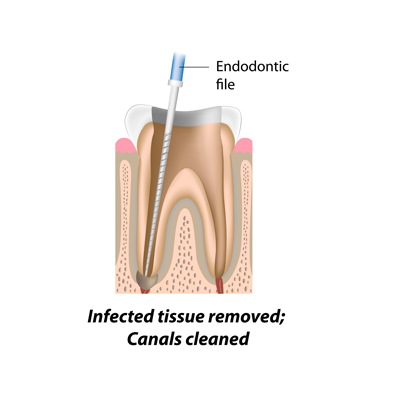
The cleaning out process is accomplished using root canal files and rotary instruments. The canals maybe as narrow as 0.05mm in diameter and so a series of these files of increasing diameter are each subsequently placed inside the root canals and worked down to the full length (determined by an electronic apex locator) in order to shape the canals.
The shaping facilitates irrigation with Sodium hypochlorite and other disinfectant solutions, which are used periodically to flush away the debris and to eliminate any bacteria that remain inside the canals. Once the tooth is thoroughly cleaned it maybe possible to have the treatment completed in a single visit, otherwise a medication is placed inside the tooth and a temporary filling is placed in the access hole to keep out contaminants (like saliva and food) between appointments.
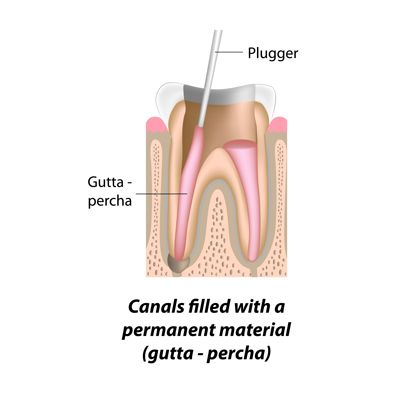
At the next appointment, to fill the interior of the root canals, a sealer paste and an inert root filling material called gutta-percha is placed using advanced thermal techniques. The entrance of the root canals are sealed with an anti-bacterial filling ensuring a good seal.

To fill the exterior access hole created at the beginning of treatment, a temporary filling is placed and an appointment is made with your dentist for the permanent restoration. In some instances your dentist may request that we place the permanent restoration inside the tooth.
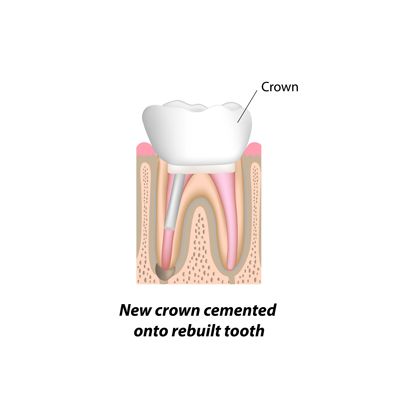
For a significant number of teeth, in particular heavily filled posterior teeth, a crown, crown and post, or other such type restoration is required to protect the tooth, preventing it from breaking, and restoring it to full function. The crown is a treatment that your dentist will be able to help you with. We will always advise you if this is required at the consultation appointment.
On completion of treatment we will send a detailed report to your regular dentist who will then place the crown restoration – should this be required; and continue with your routine dental care.

